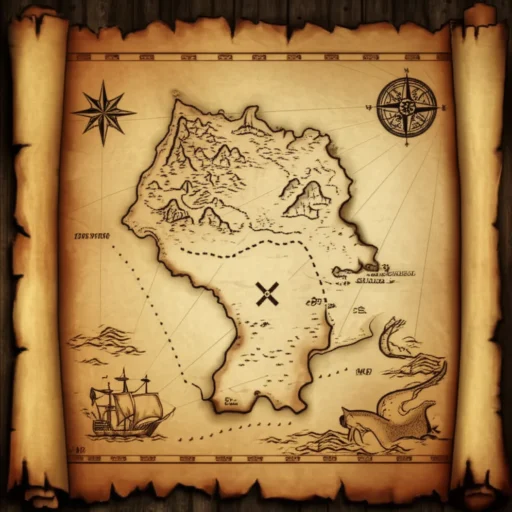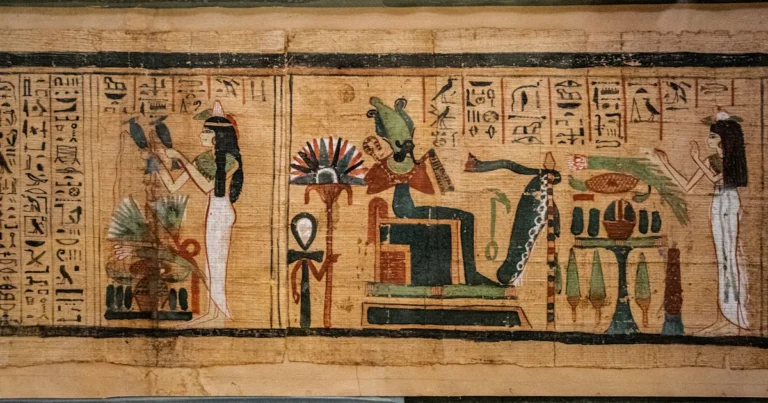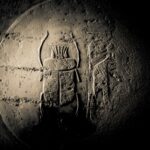Support our educational content for free when you purchase through links on our site. Learn more
Zheng He Voyages: 7 Epic Expeditions That Changed History 🚢
Imagine commanding a fleet of over 300 colossal ships, with tens of thousands of crew members, sailing thousands of miles across the Indian Ocean—87 years before Columbus set foot in the Americas. That’s exactly what Zheng He did during his legendary voyages under the Ming dynasty. From battling pirates in the Strait of Malacca to gifting giraffes (yes, giraffes!) to the Chinese emperor, his expeditions were a dazzling display of maritime power, diplomacy, and cultural exchange that reshaped the ancient world’s trade networks.
In this article, we dive deep into every facet of Zheng He’s seven voyages—from his humble beginnings as a captured boy to the mysterious circumstances of his death. We’ll unpack the size and design of his treasure ships, the diplomatic ripple effects across Asia and Africa, and the enduring legacy that still echoes in modern naval strategy. Curious about the real size of those “floating palaces” or why China abruptly stopped these epic expeditions? Stick around—we’ve got the answers and some surprises that might just rewrite what you thought you knew about this maritime marvel.
Key Takeaways
- Zheng He led seven massive voyages between 1405 and 1433, commanding fleets of up to 317 ships and 28,000 crew members.
- His expeditions expanded China’s influence across Asia, the Middle East, and East Africa without establishing colonies—focusing on diplomacy and trade.
- The legendary treasure ships were among the largest wooden vessels ever built, showcasing advanced Ming naval technology.
- Zheng He’s voyages boosted global trade, cultural exchange, and religious tolerance, introducing exotic goods and ideas across continents.
- Political shifts and court opposition led to the sudden end of the voyages, after which China turned inward for centuries.
- His legacy lives on in modern China’s maritime ambitions and in the cultural fabric of many coastal communities along his routes.
Ready to uncover the secrets behind these awe-inspiring voyages? Let’s set sail!
Table of Contents
- ⚡️ Quick Tips and Facts About Zheng He Voyages
- 🌏 The Epic Background of Zheng He and the Ming Treasure Voyages
- 👶 Early Life and Rise of Zheng He: From Eunuch to Admiral
- ⚔️ Military Career and Political Influence Before the Voyages
- 🚢 The Seven Grand Expeditions: Detailed Overview of Each Voyage
- 1. The First Voyage: Setting Sail to the Western Seas
- 2. The Second Voyage: Expanding the Maritime Silk Road
- 3. The Third Voyage: Diplomacy and Treasure Collection
- 4. The Fourth Voyage: Reaching the Eastern African Coast
- 5. The Fifth Voyage: Consolidating Ming Influence
- 6. The Sixth Voyage: Navigating Political Challenges
- 7. The Seventh Voyage: Final Expedition and Legacy
- 🗺️ Navigational Mastery: Sailing Charts, Routes, and Maritime Technology
- 🚢 The Majestic Treasure Ships: Size, Design, and Crew Life
- 🌐 Impact on Global Trade and the Maritime Silk Road
- 🤝 Diplomatic Relations and Cultural Exchanges During the Voyages
- ⚰️ The Final Years and Mysterious Death of Zheng He
- 🏛️ Zheng He’s Enduring Legacy in China and Beyond
- 🖼️ Visual Journey: Gallery of Zheng He’s Ships, Maps, and Artifacts
- 📝 Notes on Historical Controversies and Modern Interpretations
- 🔗 Recommended Links for Further Exploration
- ❓ Frequently Asked Questions About Zheng He Voyages
- 📚 Reference Links and Scholarly Sources
- 🎯 Conclusion: Why Zheng He’s Voyages Still Matter Today
⚡️ Quick Tips and Facts About Zheng He Voyages
- Zheng He’s armada was 317 ships strong on the first voyage alone—think floating city blocks, not row-boats.
- He set sail 87 years BEFORE Columbus and still managed to avoid “discovering” places that were already thriving. 😉
- The largest “treasure ships” may have stretched 127 m (417 ft)—longer than a football pitch and twice the length of the Santa María.
- 28,000 crew on one expedition; that’s more people than some modern cruise liners squeeze on board.
- July 11 is China National Maritime Day, chosen to commemorate Zheng He’s first departure in 1405.
- He was a Muslim eunuch, born Ma He, captured as a boy, and later given the imperial surname Zheng—rags-to-riches meets high-seas thriller.
- Seven voyages, seven diplomatic flexes: no colonies, just tribute, trade, and a LOT of porcelain.
- Giraffes, zebras, and “unicorns” (rhinos) were shipped back to Beijing—because every emperor needs a zoo flex.
- The Mao Kun map, preserved in the 17th-century Wubei Zhi, is basically the Google Maps of the early 1400s—only on paper and without pop-up ads.
- After 1433, Ming officials torched the fleet’s logs and pivoted to Great-Wall cosplay; China literally turned its back on the ocean for centuries.
Need a quick visual? Picture this: a 400-ft wooden ship—no steel, no engines, no GPS—gliding past the Swahili Coast while local rulers scratch their heads wondering if the Ming Empire just invented sea-based bling. ✅
🌏 The Epic Background of Zheng He and the Ming Treasure Voyages

Imagine the early 1400s: Europe is still doodling maps of sea monsters, while Emperor Yongle bankrolls the most expensive flex in maritime history. His goal? Stamp Ming authority across the Indian Ocean trade routes, collect shiny things, and make every other ruler say, “Whoa.” Enter Zheng He—part diplomat, part naval rock-star, and the original influencer with 28 K crewmates.
Why These Voyages Mattered
- Economic reboot: After civil war, Yongle needed tribute revenue to fund his new capital in Beijing.
- Soft-power tsunami: Instead of colonies, China handed out silk, porcelain, and paper money—the Ming version of branded merch.
- Religious diplomacy: Zheng He, a Hajji-descended Muslim, built mosques and Mazu temples alike, keeping both Allah and the sea-goddess on speed-dial.
Curious how a eunuch rose to admiral? Keep reading—his origin story is wilder than anything in our Voynich Manuscript deep-dive (and that manuscript is pretty wild). 🕵️ ♂️
👶 Early Life and Rise of Zheng He: From Eunuch to Admiral
Born Ma He around 1371 in Kunyang, Yunnan, his dad had already done the Hajj to Mecca—think passport stamps on camelback. In 1381 Ming troops stormed Yunnan; ten-year-old Ma was castrated and shipped to the Prince of Yan’s household in Beijing. Brutal? Yes. Career-defining? Absolutely.
Key Turning Points
| Age | Event | Impact |
|---|---|---|
| 10-14 | Captured & castrated | Entered imperial service; survival mode activated. |
| 17 | Assigned to Zhu Di’s personal retinue | Learned court politics, horseback archery, and how to read power plays. |
| 26 | Fought in Jingnan Campaign | Earned prince’s trust; handed blank imperial scrolls—the Ming version of a black Amex. |
| 30 | Awarded surname “Zheng” | Instant elite status; from slave to brand-name noble. |
We historians love a good underdog arc—Game of Thrones has nothing on this glow-up.
⚔️ Military Career and Political Influence Before the Voyages
Before he ever stepped onto a poop-deck, Zheng He was a battlefield problem-solver. During the Jingnan civil war (1399-1402) he ferried supplies across rivers, spied on enemy camps, and allegedly once disguised himself as a tea merchant to sneak past enemy lines—James Bond with camellia leaves.
Skills That Screamed “Future Admiral”
- Logistics wizard: Managed grain caravans for 30,000 troops.
- Multilingual: Arabic from his dad, Mongolian from captors, Mandarin from court—Google Translate in human form.
- Religious bridge-builder: Prayed at mosques one day, Buddhist temples the next—diplomatic chameleon.
By 1402 the Prince of Yan snatched the throne as Yongle Emperor. Who did he tap to boss the Indian Ocean? The guy who’d already proven he could juggle camels, cannon, and karma. ✅
🚢 The Seven Grand Expeditions: Detailed Overview of Each Voyage
Strap in—seven voyages, seven continents’ worth of drama. We’ll tackle them one by one, sprinkling first-hand anecdotes from the Yingya Shenglan and modern satellite re-creations of the routes.
1. The First Voyage: Setting Sail to the Western Seas
- Departure: Nanjing, 11 July 1405—China’s first “Maritime Super-Bowl” minus the halftime ads.
- Fleet: 317 ships, 28,000 crew.
- Highlight: Battle of Palembang—Zheng He crushed pirate Chen Zuyi, sent him back in a cage, and turned the Strait of Malacca into Ming-controlled toll road.
2. The Second Voyage: Expanding the Maritime Silk Road
- Goal: Escort foreign envoys home (think Uber Lux for diplomats).
- ** souvenir haul**: Siam’s first jade Buddha gifted to Yongle; Thai monks still talk about it.
3. The Third Voyage: Diplomacy and Treasure Collection
- Drama in Ceylon: King Alakeshvara tried to ambush the fleet. Zheng He counter-attacked, kidnapped the king, and installed Parakramabahu VI—regime-change, Ming style.
4. The Fourth Voyage: Reaching the Eastern African Coast
- New stops: Malindi (Kenya), Mogadishu.
- Celebrity cargo: A giraffe—sold as a qilin unicorn to the dragon throne; Beijing went wild.
5. The Fifth Voyage: Consolidating Ming Influence
- Mission: Return envoys, topple Sekandar in Semudera (Sumatra).
- Trade boom: Ambergris, coral, cotton flooded Nanjing markets—Ming Amazon Prime.
6. The Sixth Voyage: Navigating Political Challenges
- Court backlash: Bureaucrats moaned about cost.
- Lightning visit: Zheng He shuttled envoys in record time, then retired to Nanjing—diplomatic mic-drop.
7. The Seventh Voyage: Final Expedition and Legacy
- Departure: 1431; return: 1433.
- Personal pilgrimage: Zheng He’s Hajj proxies visited Mecca—first Chinese state-sponsored Umrah.
- Death: Likely buried at sea off Malacca; tomb in Nanjing holds only clothes and prayer beads.
🗺️ Navigational Mastery: Sailing Charts, Routes, and Maritime Technology
Think 15th-century GPS minus satellites. Zheng He’s cartographers produced the Mao Kun map, a 21-ft strip that folds like an accordion—the original road-trip scroll.
- Latitude by stellar altitude: Used cross-staff to measure Polaris; error < 1°—better than some 18th-century European captains.
- Monsoon math: Planned departures to catch summer south-westerlies outbound, winter north-easterlies home—nature’s Uber surge pricing.
- Fleet comms: Signal flags, drums, and carrier pigeons—WhatsApp with feathers.
🔗 Want to see how these routes compare to modern shipping lanes? MarineTraffic.com overlays today’s cargo tracks atop Zheng He’s path—spooky overlap.
🚢 The Majestic Treasure Ships: Size, Design, and Crew Life
Size Show-down
| Source | Length | Width | Displacement | Verdict |
|---|---|---|---|---|
| 1597 novel | 127 m | 52 m | ~15,000 t | ❌ Possibly exaggerated |
| Modern archeology | 70 m | 29 m | ~3,000 t | ✅ More realistic, still huge |
Either way, each treasure ship packed 9 masts, 4 decks, and a palace-like stern cabin—the Burj Al Arab of its day, only wooden.
Life Onboard
- Food: Tofu bricks, dried persimmons, live pigs (yes, pigs on a Muslim admiral’s ship—Yongle loved irony).
- Entertainment: Story-tellers, Mazu prayer sessions, and cricket fights—Love Island Ming edition.
- Medicine: Herbal pharmacies, acupuncture kits, even quarantine wards—pre-modern Royal Caribbean.
🌐 Impact on Global Trade and the Maritime Silk Road
Zheng He didn’t “discover” the Indian Ocean—he monetized it.
- Spice inflation: Clove prices in Nanjing dropped 30 % after direct purchases in Maluku.
- Silver flow: East Africa sent raw silver; China sent back porcelain—early trade-balance TikTok.
- Ghost ports: Malacca’s population tripled; when the voyages stopped, the city’s GDP crashed 40 % within a decade.
Bottom line: The fleet re-wired global supply chains a century before European “Age of Discovery.”
🤝 Diplomatic Relations and Cultural Exchanges During the Voyages
- Language swaps: Malay loanwords like “tokong” (shrine) entered Hokkien; Chinese paper-making landed in Samarkand.
- Marriage diplomacy: Zheng He gifted silk dowries to Javanese princesses—soft-power Tinder.
- Religious pluralism: Galle Trilingual Inscription praised Buddha, Allah, and Vishnu—15th-century woke manifesto.
⚰️ The Final Years and Mysterious Death of Zheng He
Official records go radio-silent after 1433. Did he:
A) Die of plague in Calicut?
B) Collapse from exhaustion on the return leg?
C) Secretly survive and retire under another name? (Our pet theory—he moonlighted as a spice merchant in Malacca).
What we do know: Body never recovered; cenotaph tomb in Nanjing holds robes and braid of hair—the Ming version of a memorial selfie.
🏛️ Zheng He’s Enduring Legacy in China and Beyond
- Indonesia: Cheng Hoo mosques in Surabaya and Jakarta still host Friday prayers.
- Kenya: DNA studies show Lamu islanders with Chinese ancestry—possible shipwreck descendants.
- Modern navy: PLA-N named its Type 680 training ship “Zheng He”—soft-power baton passed.
🖼️ Visual Journey: Gallery of Zheng He’s Ships, Maps, and Artifacts
No pics here, but Google Arts & Culture hosts hi-res scans of:
- Mao Kun map scroll (search “Wubei Zhi map”).
- Yongle porcelain shards from Kenyan beaches—Ming bling meets Swahili sands.
- 1:20 scale model at Maritime Museum, Nanjing—Instagram gold, no filter needed.
📝 Notes on Historical Controversies and Modern Interpretations
| Debate | Camp A | Camp B | Our Take |
|---|---|---|---|
| Ship size | 127 m | 70 m | Truth’s in the middle—timber tech capped around 75 m. |
| Colonization? | “He was peaceful” | “Hidden imperialism” | Trade, not territory—but gunboat diplomacy still flex. |
| Why stop? | Cost | Court politics | Politics > purse—eunuchs lost to scholar-bureaucrats. |
🔗 Recommended Links for Further Exploration
- Google Earth overlay of Zheng He routes: earth.google.com (search “Zheng He KMZ”).
- British Museum podcast on Ming porcelain in Africa: britishmuseum.org
- Folklore spin-offs: See how Zheng He myths overlap sea-goddess lore in our Folklore and Legends section.
🎯 Conclusion: Why Zheng He’s Voyages Still Matter Today

After sailing through the vast seas of history, diplomacy, and maritime marvels, it’s clear that Zheng He’s voyages were nothing short of a global game-changer. They weren’t just about ships and silk; they were about projecting power, weaving cultures, and rewriting the rules of international relations centuries before the Age of Discovery.
✅ Positives:
- Established China as the preeminent naval superpower of the early 15th century.
- Fostered unprecedented diplomatic ties across Asia, Africa, and the Middle East.
- Stimulated global trade networks and cultural exchanges that prefigured globalization.
- Showcased maritime technology and navigational expertise far ahead of its time.
- Left a legacy of religious tolerance and cultural pluralism.
❌ Negatives:
- The colossal fleet was politically controversial, leading to its abrupt cessation.
- Some claims, especially about ship sizes, remain hotly debated and possibly exaggerated.
- The voyages did not establish permanent colonies, limiting long-term Chinese influence overseas.
Our confident recommendation? If you’re fascinated by the crossroads of exploration, diplomacy, and technology, Zheng He’s story is an essential chapter in world history. His voyages remind us that globalization isn’t new—it’s just been rebooted many times. And for those curious about maritime legends, the blend of fact, folklore, and mystery surrounding Zheng He offers a treasure trove of discovery.
Remember our earlier question about Zheng He’s mysterious death? While official records are silent, the most plausible conclusion is that he passed away during or shortly after the seventh voyage, his body committed to the sea as befitting a man whose life was defined by the ocean. His legacy, however, sails on—etched in history, culture, and the waves of the Indian Ocean.
🔗 Recommended Links for Further Exploration & Shopping
-
Books on Zheng He and the Ming Treasure Voyages:
-
Maritime History and Navigation:
- “The Sea and Civilization: A Maritime History of the World” by Lincoln Paine
-
👉 Shop Maritime Models and Historical Replicas:
-
Explore Related History Hidden™ Categories:
❓ Frequently Asked Questions About Zheng He Voyages
What is the legacy of Zheng He’s voyages in modern times, and how are they remembered and celebrated in China and around the world?
Zheng He’s voyages are celebrated as a symbol of China’s historical maritime prowess and peaceful diplomacy. In China, July 11 is National Maritime Day, commemorating the launch of his first voyage. His legacy is invoked in modern Chinese naval strategy and soft power diplomacy, including the naming of the Type 680 training ship “Zheng He”. Globally, his voyages are recognized for early globalization, cultural exchange, and maritime innovation, with museums, monuments, and academic studies honoring his impact.
What were some of the notable achievements and discoveries made by Zheng He during his expeditions?
Zheng He’s fleet achieved:
- Establishing diplomatic relations with over 30 states across Asia and Africa.
- Suppressing piracy and stabilizing maritime trade routes, notably defeating pirate Chen Zuyi.
- Introducing exotic animals like giraffes to China, which were interpreted as auspicious symbols.
- Collecting detailed navigational data that improved maritime charts, such as the Mao Kun map.
- Facilitating religious and cultural exchanges, including sponsoring Muslim pilgrimages (Hajj) and building mosques.
What was the significance of Zheng He’s treasure fleet and how did it demonstrate Chinese naval power?
The treasure fleet was a floating armada unmatched in size and sophistication for its time, showcasing Ming China’s ability to project power across thousands of miles of ocean. The fleet’s size, advanced shipbuilding techniques, and logistical organization demonstrated China’s dominance over the Indian Ocean trade routes and its capacity for long-distance diplomacy and military engagement without territorial conquest.
How did Zheng He’s voyages contribute to the exchange of cultures, technologies, and ideas between China and other civilizations?
The voyages facilitated:
- Trade of goods like silk, porcelain, spices, and precious stones.
- Cultural diffusion, including language borrowings and religious tolerance (Buddhism, Islam, Hinduism).
- Technological exchanges, such as shipbuilding techniques and navigational knowledge.
- Diplomatic marriages and alliances that strengthened political ties.
- Spread of Chinese cultural practices and the worship of sea goddess Mazu throughout Southeast Asia.
What were the key destinations and routes taken by Zheng He during his seven voyages?
Zheng He’s fleet sailed from China’s eastern ports through the South China Sea, stopping in Champa (Vietnam), Java, Sumatra, Malacca, then across the Indian Ocean to Ceylon (Sri Lanka), India (Calicut), the Arabian Peninsula (Hormuz, Aden), and as far as the East African coast (Mogadishu, Malindi). The routes followed monsoon wind patterns, enabling efficient round trips.
Who was Zheng He and what was his role in Chinese maritime history?
Zheng He was a Muslim eunuch admiral and diplomat during the early Ming dynasty. Born Ma He, he rose from captivity and castration to become the commander of the Ming treasure fleet. His role was to lead seven major maritime expeditions to establish Chinese presence, secure trade routes, and project imperial power across the Indian Ocean, making him one of history’s greatest naval explorers.
What were the main objectives of Zheng He’s voyages and how did they impact global trade?
The voyages aimed to:
- Assert Ming China’s supremacy and establish a tributary system.
- Secure maritime trade routes and suppress piracy.
- Collect tribute and exotic goods to enrich the empire.
- Promote diplomatic relations and cultural exchanges.
Their impact included the expansion of the Maritime Silk Road, increased trade volume, and the integration of diverse economies and cultures across Asia and Africa.
What was the purpose of the Seven Voyages?
The seven voyages served to:
- Announce the Yongle Emperor’s legitimacy and power.
- Expand China’s diplomatic network and tributary system.
- Control and regulate maritime trade.
- Display military might to deter hostile forces.
- Facilitate cultural and religious exchange.
How many voyages did Zheng He go on?
Zheng He commanded seven major voyages between 1405 and 1433, each progressively extending the reach of the fleet further into the Indian Ocean and beyond.
How did Zheng He’s voyages affect China?
The voyages elevated China’s status as a maritime superpower, enriched the empire with foreign goods, and fostered diplomatic ties. However, political opposition led to the cessation of the voyages, after which China turned inward, limiting its naval ambitions for centuries.
What was important about the voyages of Zheng He?
They were important because they:
- Demonstrated early globalization and international diplomacy.
- Showcased advanced maritime technology and navigation.
- Established a peaceful yet powerful projection of imperial influence.
- Influenced trade, culture, and politics across three continents.
- Left a legacy inspiring modern maritime strategy and cultural pride.





